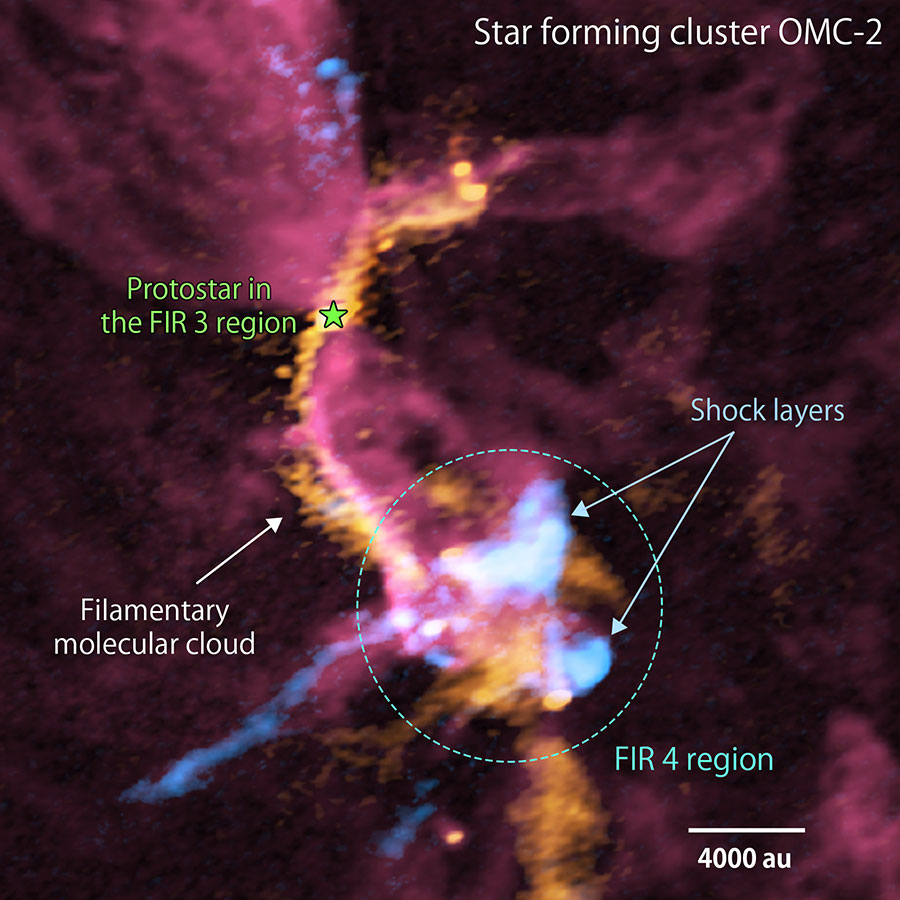
Baby stars don't always play nice with their siblings. New observations show an outflow of high-speed gas from one baby star colliding with a nearby dense cloud of gas where other stars are in the process of being born. These observations clearly show the outflow from a baby star affecting a neighboring star forming cloud. It is still unknown if it disrupts or enhances star-formation when a baby star is kicked by its neighbor like this.
Stars form from the collapse of a cloud gas and dust. But not all of the material can be incorporated into the new star; some of it is ejected as a high-speed outflow. Most stars are born bunched together in large groups, so it has been theoretically predicted that sometimes an outflow will collide with another cloud and influence star formation there. However this prediction couldn't be confirmed because star forming clusters are relatively far away from Earth and difficult to resolve in detail.
A team led by Asako Sato, a graduate student at Kyushu University, used the superior capabilities of the radio telescope ALMA (Atacama Large Millimeter/submillimeter Array) to sufficiently resolve gas and dust distributions in a cluster forming region 1400 light-years away in the constellation Orion. The team's observations show an outflow emitted from a baby star in a region known as FIR 3 impacting the nearby FIR 4 region, where a group of young stars are being born within the same cluster, and creating shock layers.
Now the team is making plans to use ALMA for additional studies to see if this stellar sibling rivalry has a positive or negative impact on star formation.
These results appeared as Sato et al. "ALMA Fragmented Source Catalogue in Orion (FraSCO) I. Outflow interaction within an embedded cluster in OMC-2/FIR 3, FIR 4, and FIR 5" in The Astrophysical Journal on February 2, 2023.






